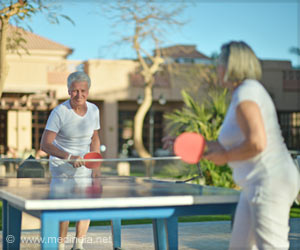Is boxing good for Parkinson's? Yes, engaging in regular boxing workouts can improve the quality of life and slow down the progression of Parkinson’s disease (PD).
- Boxing could be the best exercise therapy for people living with Parkinson's disease
- Physical exercise like boxing may help improve common non-motor symptoms of Parkinson's disease
- Therefore, engaging in regular boxing classes can enhance the quality of life and slow down the progression of Parkinson’s disease
TOP INSIGHT
Is boxing good for Parkinson's? Yes, engaging in regular boxing workouts can improve the quality of life and slow down the progression of Parkinson’s disease (PD).
Read More..
About Parkinson’s Disease
Parkinson’s disease is a movement disorder in which a chemical in the brain called dopamine is gradually reduced. This process results in slowly worsening symptoms that include tremor, stiff limbs, slowed movements, impaired posture, walking problems, poor balance and speech changes.
“Moderate exercise has long been associated with having positive impact on some people with Parkinson’s, but the outcome of this specific regimen seems particularly favorable for the majority of people,” said study author Danielle Larson, M.D., a neurologist at Northwestern University McGaw Medical Center in Chicago and a member of the American Academy of Neurology.
Details of the Study
Of participants, 43% attended an average of three or more classes per week, 48% attended an average of two classes per week and 9% attended an average of one class per week.
Findings of the Study
The survey found that most of the boxing program participants reported improvement in several quality of life areas, with 70% reporting a better social life, 63% reporting less fatigue, 62% feeling less afraid of falling, 60% experiencing improved mood, and 59% feeling less anxious. Also, 99% of current and 94% of previous boxing participants would recommend the program to others with Parkinson’s disease.
Current participants scored better than non-participants on assessments of quality of life and willingness to exercise. Non-participants scored 32 and current participants scored 25 on a standardized zero to 100 Parkinson’s disease quality-of-life scale where zero represents the best quality of life. In another standardized scale of zero to 90 with the higher number indicating greater confidence in taking part in an exercise regimen, the boxing program participants scored 54 and non-participants scored 48.
“This demonstrates that Rock Steady Boxing participants have improvement in the non-motor symptoms of the disease and, compared to non-participants, have significantly better quality of life and are more likely to feel confident engaging in continued exercise,” said Larson.
Limitations of the Study
A limitation of the study was that the survey was taken only once. The study did not follow participants and non-participants to see how their scores changed over time.
Source-Newswise
 MEDINDIA
MEDINDIA





 Email
Email




